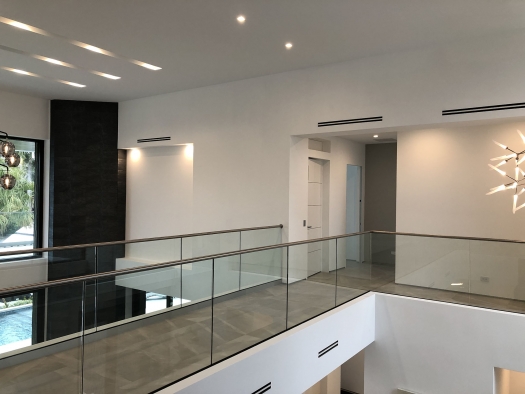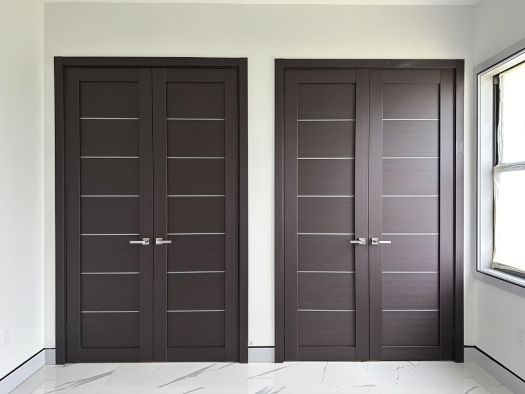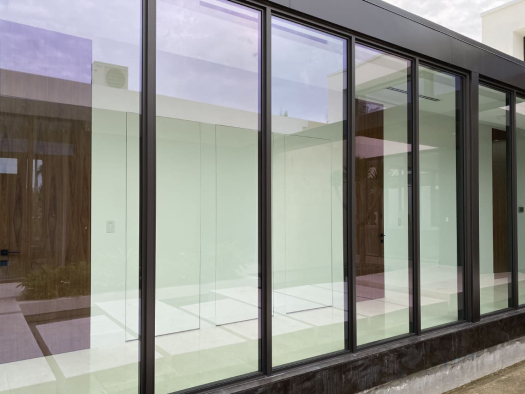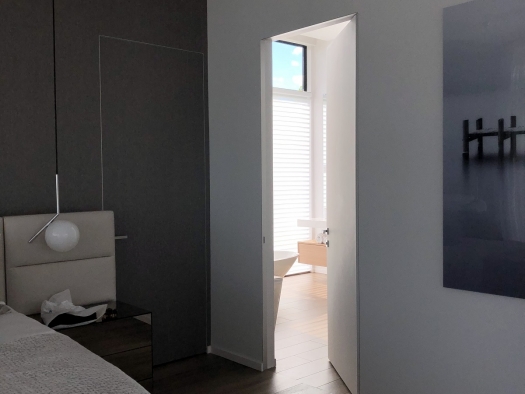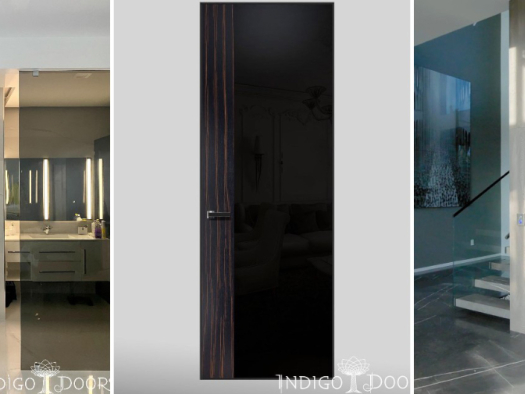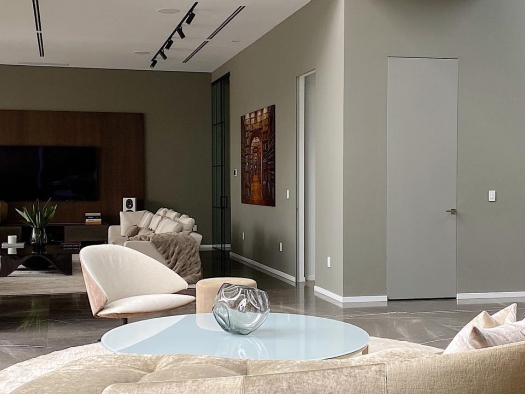- Interior Design Trends and Their Influence on Door and Flooring Selection
- The Importance of Style Coordination: How to Create a Unified Visual Impression
- Key Principles of Combining Colors and Shades Between Doors and Flooring
- Advantages of Different Types of Doors Depending on Interior Style
- Practical Tips for Choosing Doors and Flooring for Different Rooms
- Using Lighting to Emphasize Unity of Style Between Doors and Flooring
- Specialized Solutions: Doors and Flooring for Specific Interiors (e.g., Bathrooms, Kitchens)
- Impact of Texture and Materials on Visual Perception of Space: Choosing Doors and Flooring
- Individual Approach: How to Create a Unique Interior Style with Doors and Flooring
- Variety of Design Solutions: Alternative Options for Combining Doors and Flooring
- The Psychology of Color and Its Role in Shaping the Atmosphere in a Space through the Selection of Doors and Flooring
- Considerations for Doors and Flooring: Ergonomics and Practicality
- Making the Right Choice on a Budget: Saving Without Sacrificing Style and Quality
- Key Principles of Achieving Unified Interior Style through Harmonious Combination of Doors and Flooring
Interior Design Trends and Their Influence on Door and Flooring Selection
Modern interior design trends play a significant role in the choice of interior doors and flooring. Interior trends evolve over time, reflecting new preferences and homeowners' needs. For example, recent trends include a preference for natural materials, minimalism, as well as a desire for convenience and functionality.
To select suitable doors and flooring, it's essential to stay updated on the latest design trends. For instance, if minimalism is currently in vogue, opting for doors with a simple, smooth design and flooring without unnecessary patterns is advisable. This creates a clean and sophisticated overall look, which is characteristic of modern style.
It's also important to consider the architectural features of the space when choosing doors and flooring in line with current design trends. For example, if geometric shapes dominate your interior, doors with straight lines and floors with geometric patterns or layouts can integrate well into the overall style.

The Importance of Style Coordination: How to Create a Unified Visual Impression
When designing an interior, it's crucial to consider the harmony of styles between doors and flooring. Lack of harmony between these elements can create an impression of incompleteness or even chaos in the interior. Style coordination helps create a unified visual impression and lends completeness to the space.
One way to achieve harmony between doors and flooring is to use similar textures, shades, and materials. For instance, if the room features dark wood doors, then flooring with a dark finish or wood-like appearance can establish style unity. This approach is particularly effective in small spaces, where a unified style visually enlarges the area.
Another method of style coordination is using doors and flooring with similar shapes and lines. For example, if curved forms dominate the interior, doors with curves and flooring with soft lines will harmonize with each other, creating an atmosphere of coziness and comfort.
Key Principles of Combining Colors and Shades Between Doors and Flooring
The color and shade of doors and flooring play a crucial role in shaping the overall style of an interior. Well-chosen color combinations can create a harmonious and aesthetically pleasing space, while poor color choices can disrupt the visual balance and spoil the impression of the interior.
When choosing the color of doors and flooring, it's important to consider the overall color scheme of the room and its lighting. For example, in rooms with insufficient natural light, it's advisable to prefer light shades for doors and flooring to create a sense of spaciousness and increase the brightness of the room. Light interiors also benefit from doors and flooring in neutral or pastel tones, adding softness and coziness.
On the other hand, in rooms with excess natural light or pronounced warm lighting, darker shades of doors and flooring can be used. Dark colors create a cozy atmosphere and lend sophistication to the interior. However, it's important to remember that dark shades can visually reduce the size of the room, so they should be used with caution in small spaces.

Advantages of Different Types of Doors Depending on Interior Style
The choice of door type largely depends on the interior style of the room. Different types of doors have their own features and advantages that can be used to create the desired effect in the interior. For example, sliding doors are excellent for minimalist interiors as they save space and create a sense of lightness. This is particularly relevant for rooms with limited area where every square meter is valuable.
For interiors in the Provencal or classical style, panel doors with decorative elements are suitable. These doors add sophistication and style to the interior, emphasizing its luxury and refinement. Doors with glass panels may be appropriate in modern or high-tech interiors, adding light and space to the room.
When choosing the type of doors, it's also important to consider the functional features of the room. For example, moisture-resistant doors are best suited for bathrooms or toilets, as they are protected from moisture and are easy to clean. For high-traffic areas, it's advisable to choose doors with increased durability that will maintain their appearance and functionality for many years.
Practical Tips for Choosing Doors and Flooring for Different Rooms
- When selecting doors and flooring for rooms of various purposes, it's important to consider their functionality and practicality. For instance, for kitchens and entryways, it's recommended to choose doors and floors made from materials resistant to moisture, stains, and mechanical damage. In such spaces, it's advisable to use tiles, laminate, or vinyl flooring, as well as doors made from durable materials resistant to wear, such as glass or metal.
- For living rooms and bedrooms, more decorative and cozy options for doors and flooring can be chosen, taking into account their aesthetic qualities. For example, soundproof doors are suitable for bedrooms, providing additional comfort and privacy (Please read the article on "Soundproofing Interior Doors: Creating a Quiet Atmosphere at Home"). Floors in bedrooms can be soft and warm, such as wood or carpeting, to create an atmosphere of coziness and comfort.
- In addition to functionality, it's also important to consider the style and overall concept of the interior when choosing doors and flooring for different rooms. Harmony among all interior elements creates a unified image and gives the room a special charm and individuality.

Using Lighting to Emphasize Unity of Style Between Doors and Flooring
Lighting plays a significant role in creating the atmosphere of an interior and highlighting the unity of style between doors and flooring. Properly chosen lighting can draw attention to key interior elements, creating a harmonious and cozy space. For example, spotlights or floor-level lighting can effectively accentuate the beauty and texture of doors, adding extra volume and expressiveness to them.
It's also important to consider the color temperature of the light when choosing lighting. Warm light creates a cozy and comfortable atmosphere, which is particularly suitable for residential spaces where creating coziness and tranquility is important. Cold light can be used to emphasize modern and minimalist interiors, adding a sense of freshness and contemporaneity.
In addition to choosing the type of lighting and color temperature, it's also important to consider its placement and direction. For example, directed light can be used to create accents on doors or on the texture of the floor, highlighting them among other interior elements. Lighting under doors or along the floor can also add interesting lighting effects and give the room additional depth and volume.
Specialized Solutions: Doors and Flooring for Specific Interiors (e.g., Bathrooms, Kitchens)
-
Bathrooms and Toilets:
- Choose doors and flooring made from moisture-resistant materials such as plastic, glass, or specialized water-resistant wood species.
- Opt for materials that can withstand high levels of moisture and wear to ensure longevity and durability in these spaces.
-
Kitchens:
- Select flooring options that are easy to clean and resistant to grease and stains, such as ceramic tile or laminate with a protective layer.
- Ensure kitchen doors are easy to maintain and resistant to steam and grease deposits to withstand the demands of cooking environments.
-
Functionality and Practicality:
- Consider additional functionalities when choosing materials for specific spaces. For instance, opt for doors with mirrored surfaces in bathrooms to visually enlarge the space and provide added functionality.
- Install doors with built-in Soft Close mechanisms in kitchens to ensure silent closing and protect against damage from frequent use.

Impact of Texture and Materials on Visual Perception of Space: Choosing Doors and Flooring
The texture and materials of doors and flooring significantly influence the visual perception of space and the overall interior style. When selecting textures and materials, it's important to consider not only their appearance but also their tactile properties, which can add extra comfort and coziness to the room. For instance, doors and floors made of natural wood create an atmosphere of warmth and naturalness, adding a touch of natural charm to the interior.
Another important aspect when choosing textures and materials is their ability to visually alter the size and proportions of the room. For example, vertical stripes on doors or floors can visually increase the height of the room, making it feel more spacious and airy. Horizontal lines, on the other hand, can create a sense of widening the space horizontally.
When choosing textures and materials for doors and flooring, it's also crucial to consider their compatibility with the overall interior style and other decorative elements. For example, doors and floors with rough textures and natural materials harmonize well with rustic or eco-style interiors, accentuating their natural beauty and coziness. Glass doors and glossy floors, on the contrary, add modernity and elegance to contemporary or high-tech interiors.
Individual Approach: How to Create a Unique Interior Style with Doors and Flooring
Every interior is unique, and creating a distinctive style requires an individual approach to choosing doors and flooring. Instead of following trends, it's important to consider your own preferences and needs to create an interior that reflects your personality and character. For example, if you prefer minimalism and simplicity, it's better to choose doors and flooring with smooth surfaces and minimal decorative elements.
When creating a unique interior style with doors and flooring, it's also important to use unconventional solutions and material combinations. For instance, combining wooden doors with metal details or glass inserts can add originality and uniqueness to the interior. Experiment with colors, textures, and shapes to create an interior that reflects your unique inner aesthetic and style.

Variety of Design Solutions: Alternative Options for Combining Doors and Flooring
In addition to traditional options for doors and flooring, there are plenty of alternative design solutions that can add originality and individuality to the interior. For example, instead of standard doors, you can use sliding glass or wooden partitions, which not only save space but also give the room a modern and stylish look.
For flooring, you can use not only traditional materials such as laminate or hardwood but also alternative options such as natural fiber-based carpeting or ceramic tiles with unusual patterns. Such unconventional solutions help create an interior that stands out from the rest and gives the room personality and character.
Combining different materials and textures in doors and flooring also allows for creating interesting and unexpected effects in the interior. For example, combining wood with metal or stone can create contrasting and attractive combinations, adding dynamics and sophistication to the overall look of the room.
The Psychology of Color and Its Role in Shaping the Atmosphere in a Space through the Selection of Doors and Flooring
Color psychology plays a significant role in shaping the atmosphere within a room and can strongly influence our emotional state and mood. The psychology of color studies the impact of various shades on human perception and behavior. When choosing doors and flooring, it's essential to consider not only their visual impact but also the emotional reactions they may evoke in people.
For example, neutral colors such as white, gray, and beige create a sense of calmness and harmony, making them an excellent choice for bedrooms and relaxation areas. Warm tones like brown or golden can add coziness and comfort to the interior, while cool tones such as blue or green can create a feeling of freshness and coolness.
However, it's important to remember that color perception is subjective and can vary depending on individual preferences and associations. For instance, while some people may associate the color red with energy and passion, others may perceive it as aggression and tension. Therefore, when choosing the color of doors and flooring, it's crucial to consider the preferences of all family members and create an interior that is pleasant and comfortable for everyone.

Considerations for Doors and Flooring: Ergonomics and Practicality
Ergonomics and practicality are crucial factors to consider when choosing doors and flooring. Here's why:
-
Durability and Strength:
- Opt for doors made of solid wood or metal, or those with high-quality coatings, especially for high-traffic areas. These materials offer increased resistance to mechanical damage and maintain their appearance over time.
-
Functional Characteristics:
- Select flooring materials based on their functional properties and the room's usage patterns. For spaces with high humidity levels like bathrooms or kitchens, prioritize moisture-resistant and easy-to-clean options to ensure durability and safety.
-
Alignment with Interior Concept:
- Ensure that the chosen doors and flooring complement the overall style and concept of the interior. Integrating ergonomic and practical solutions seamlessly into the design helps create a cohesive and functional space.
Making the Right Choice on a Budget: Saving Without Sacrificing Style and Quality
When choosing doors and flooring with budget in mind, it's important to find a balance between style, quality, and affordability. There are several ways to save money without sacrificing the appearance and functionality of the interior.
- Firstly, consider alternative materials that can mimic more expensive types of wood, stone, or tile but are more affordable. For example, laminate flooring with a wood effect or ceramic tiles with the texture of natural stone can be cost-effective options.
- Secondly, you can explore budget-friendly models of doors and flooring from reputable manufacturers. This allows you to maintain style and quality while saving on the price. It's important to choose products with a good reputation and guaranteed quality to avoid unpleasant surprises in the future.
- You can also try to save on installation and maintenance by choosing materials and solutions that do not require complex laying or special care. For example, installing laminate or vinyl flooring yourself can significantly reduce labor costs.
It's important to remember that saving on doors and flooring should not compromise their quality and durability. Choose materials that will serve you for many years and maintain their appearance and functionality even with intensive use.

Key Principles of Achieving Unified Interior Style through Harmonious Combination of Doors and Flooring
In conclusion, creating a unified style in the interior through a harmonious combination of doors and flooring is an important aspect of room design that allows you to create an atmosphere of comfort, coziness, and style. The key principles in this process include considering the overall interior style, choosing suitable materials and textures, and coordinating the color scheme and design.
Remember to prioritize practicality and functionality when choosing doors and flooring, taking into account their purpose and usage characteristics. Ergonomics and ease of use should be a priority when making decisions about purchasing and installation.
With these principles and rules in mind, you can achieve harmony and a cozy atmosphere in your home or office that will delight you and your guests for many years to come.

